HyperX Cloud III Wireless review
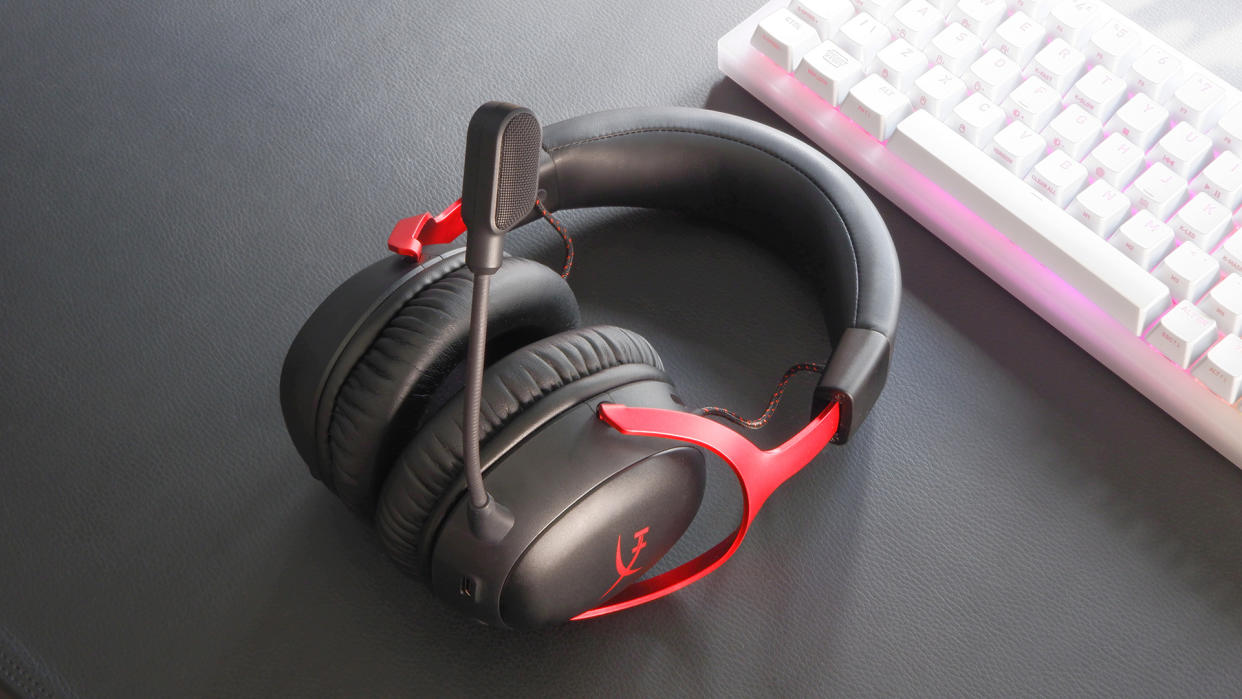
The HyperX Cloud III Wireless offer a more affordable alternative to the HyperX Cloud Alpha Wireless we recommend as the best wireless gaming headset. For many PC gamers, that's likely to be a tantalising offer. However, the Cloud III and Cloud Alpha are very different headsets, and I'm not entirely convinced by this cheaper unit.
Let's start with the positives. The Cloud III Wireless offers a sturdy build that is yet to creak, bend, or break during my usage over the past two weeks. The headset's earcups are held in place by a tell-tale metal frame bathed in red and the surrounds are all plastic. The ear and head cushioning is a comfy and uniform leatherette. All together, it's a pretty standard gaming headset, and while the slightly hollow feeling earcups aren't my favourite, it's similar in styling to the Cloud line-up we've come to know so well.
A volume wheel with a smooth, slightly tactile action sits on the right earcup. On the left, a microphone mute button, power button and a USB Type-C charging port. The removable microphone extends out from the left earcup, connected via a slotted 3.5mm jack.
My personal preference for a boom arm microphone is a flip-to-mute, simply for ease of muting it and moving it aside when it's not needed, though HyperX has employed a removable microphone for a long time and it remains a popular choice. This particular microphone comes with a small red light on the tip of the boom arm to indicate when it's muted—enough to give a quick visual cue to when the mic's disabled, and a good way to avoid accidentally talking to myself.
Cloud III Wireless specs
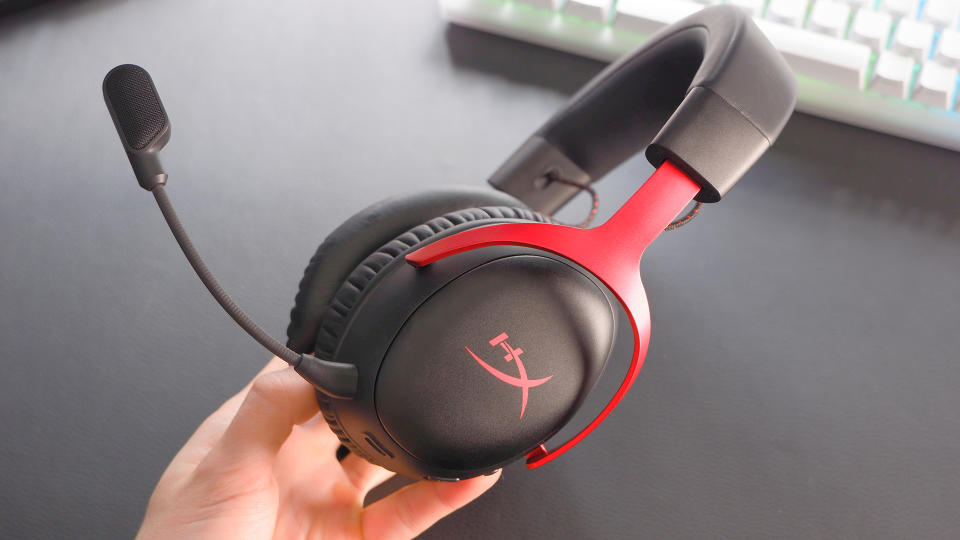
Connection: 2.4 GHz wireless (via USB Type-C dongle with Type-A adapter)
Type: Closed back
Frequency response: 10 Hz – 21 kHz
Drivers: Dynamic, 53mm with neodymium magnets
Connector: USB Type-C
Microphone: Electret condenser microphone
Weight: 340 g (with mic)
Price: $150/£170/€150 (MSRP) | $116 | £119 (on sale at time of writing)
A mic's tone and profile are its most important qualities. The one included on the Cloud III delivers a tone favouring the upper ranges and with a much less pronounced bass response than some. That means it's not a natural sounding microphone, but an extremely clear one. For gaming over Discord or in-game voice chat, boosting the higher frequencies is not a bad thing—the Cloud III's mic cuts through game audio like a knife through butter. However, if you want a headset that's better suited to streaming or recording your voice, you'll want to look elsewhere.
I haven't felt the need to take the microphone off the headset much, as I'm not wearing this headset out of the house at all. There's no Bluetooth connectivity included on the Cloud III Wireless, only HyperX's 2.4 GHz connection via a dedicated dongle, meaning it's much more a dedicated PC headset than something like the SteelSeries Nova Pro or Bang & Olufsen Portal.
The dedicated wireless dongle will work across PC, PlayStation, and Nintendo Switch, however, thanks to an adaptor in the box to change it from a native Type-C connection into a Type-A.
Unfortunately, I did have a couple issues with the Cloud III's dongle, namely what appeared to be interference with other wireless devices I'm using alongside it. Side-by-side with a Logitech G Pro X Superlight dongle—which is much smaller than the Cloud III's—I had some instances of rogue disconnections, which had at times caused the headset to repeat the word 'disconnected' at me over and over. There were also a few moments where the audio cut out or was distorted in some way—the first time I've experienced anything of the sort in recent years, and which happened a few too many times during a Destiny 2 raid. Thankfully this behaviour hasn't continued since moving onto another USB port on my PC's case, away from other device dongles.
The fit of the Cloud III isn't all that comfortable for me over longer periods of working and gaming. I find myself itching to remove the headset after four or more hours of wearing it. Four hours is a long time to wear anything on your head, and the Cloud III is not particularly heavy (I weighed it at 340 grams), but I have noticed some ear fatigue with the Cloud III that I hadn't experienced with the AceZone A-Spire I was previously using prior to testing.
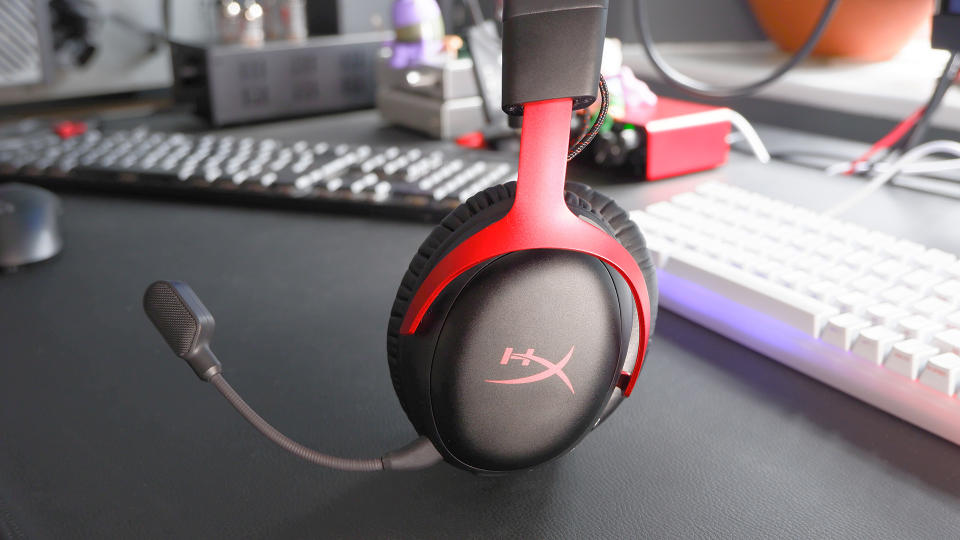
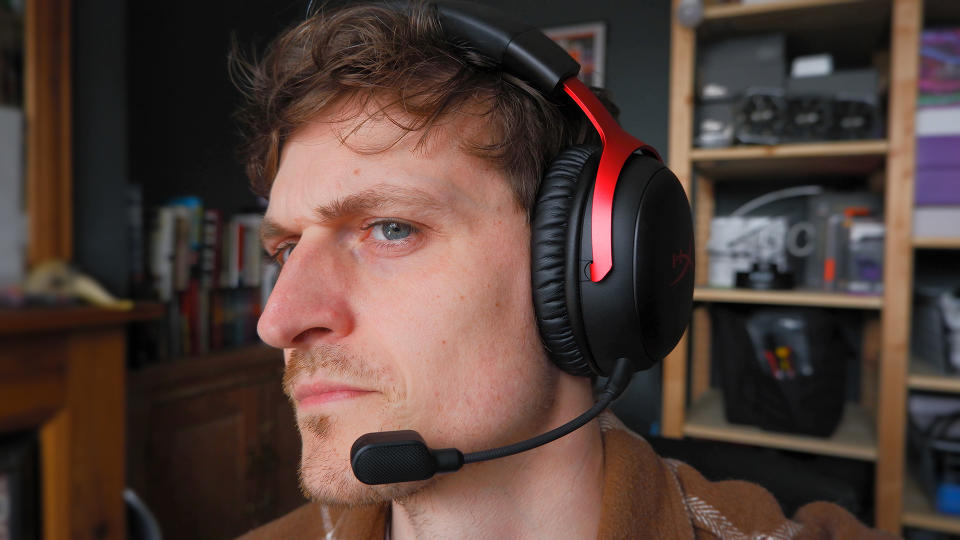
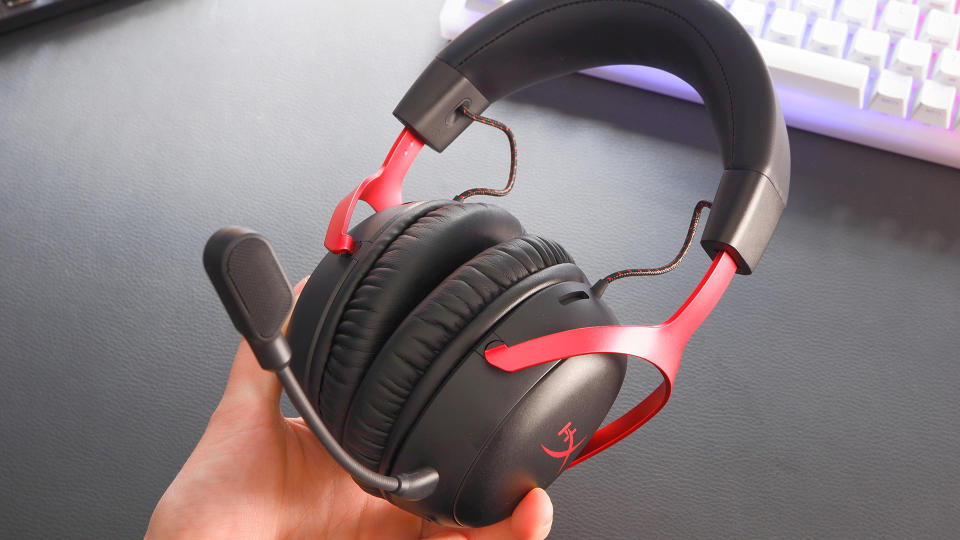
The 120-hour battery life brandished by the Cloud III Wireless is good compared to the wider market, and in a few weeks of testing I've hardly reached for the charging cable much at all. Though HyperX does offer a much, much lengthier battery life in the Cloud Alpha Wireless, upwards of 300 hours, and that's just one of a few reasons to favour the more expensive Alpha kit, if you can consider spending the extra cash.
What's left to say about the Cloud III's? The sound quality, of course. The most important part of any headset, gaming or otherwise. I went into this review expecting a familiar sound, but conversely the profile of the Cloud III Wireless is difficult to put a finger on.
The bass feels more pronounced on this headset than some more neutral sounding headsets and yet lacks any real oomph. It's trying, really trying, to highlight the lower frequencies, yet the actual drivers don't sound like they're capable of it. As a result, when the bass is kicking, it detracts from the rest of the mids and highs. Without any bass thumping, the high-end is better and for a closed-back headset—it doesn't sound pointy or harsh—but the high-end response is nothing to write home about.
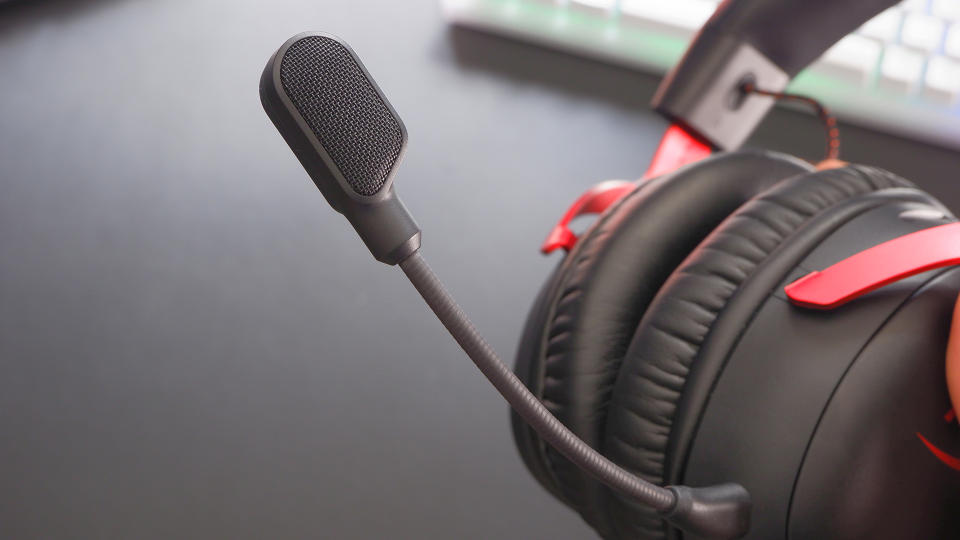
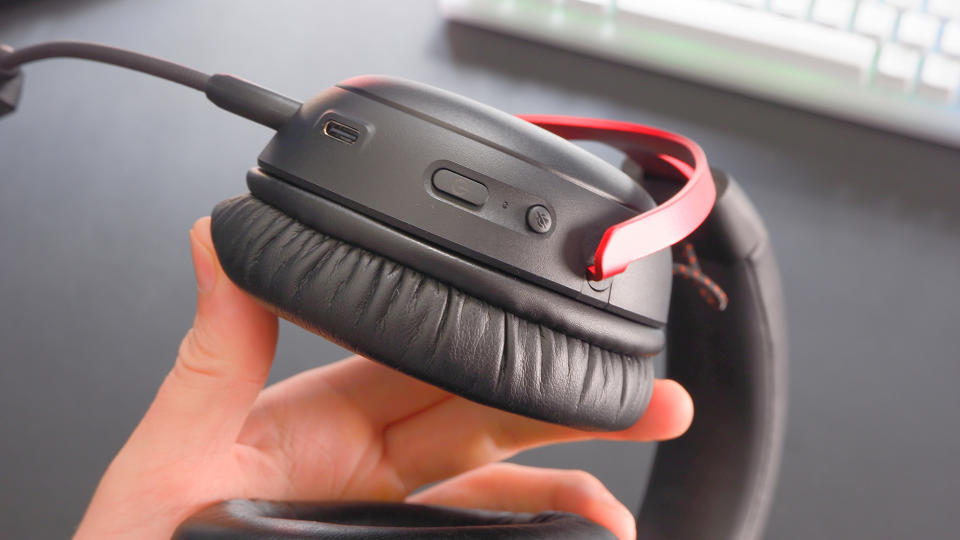
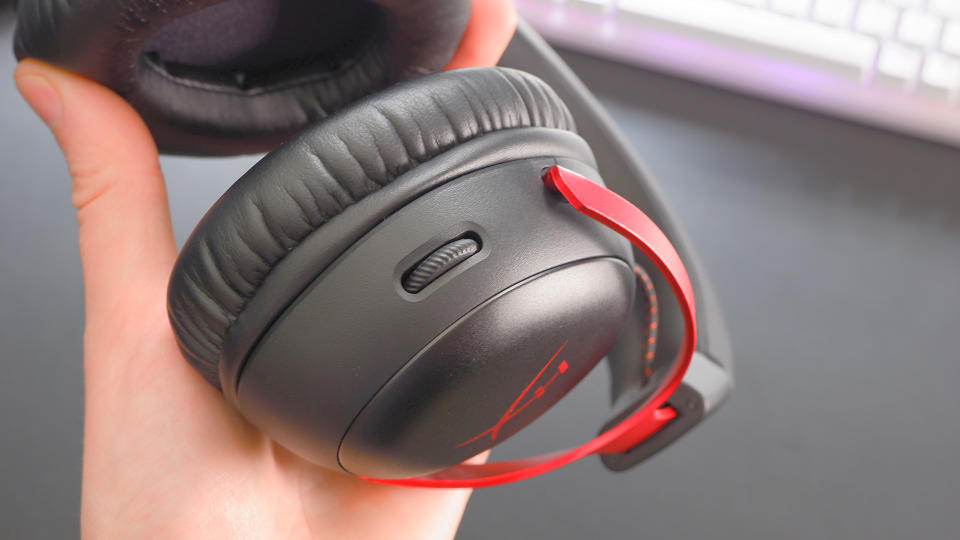
Buy if…
✅ You want a clear microphone for gaming: The Cloud III Wireless come with a highly positionable boom arm microphone, which excels for clear communication in games. That said, it's not the most natural sounding microphone around.
✅ You don't want to charge much: The Cloud III Wireless has a long-lasting battery that didn't see me reaching for a USB-C charging cable often. Though, I would still prefer the Cloud Alpha Wireless and its 300-hour battery life.
Don't buy if…
❌ You listen to a lot of music: While decent sounding for games, the sound profile on the Cloud III Wireless leaves a lot to be desired for listening to music. There's just something about that bass response… it sounds like it's been bumped up and yet the drivers can't deliver it.
❌ You could stretch to the Cloud Alpha Wireless: The more expensive HyperX headset, unsurprisingly, is just an all-round much better headset. And it's definitely worth the extra money spent.
The profile on the Cloud III Wireless is better suited to gaming than listening to music. Without too much going on all at once, it's easy to hone in on individual cues in-game, and I've been playing The Finals and Destiny 2 on this headset all week and I've had no complaints. I've nothing spectacular to report, either, but this headset does not provide a bad gaming experience by any means.
Overall, the sound profile of the Cloud III Wireless is simply quite unremarkable, and as someone that listens to music during the work day, and hops on a game during the night, I'd look to other, more flexible gaming headsets with a wider-ranging profile to cover my needs. More generally, the headset itself is just fine. You could happily use it for a long time without much of a thought, but as a picky reviewer I'd side with the Razer BlackShark V2 Pro instead, the older version of which is frequently discounted to a similar $120 – $150 price as the Cloud III.
Ideally, we'd all be able to hold off for a Black Friday discount on the Cloud Alpha Wireless, which really is a more all-round impressive headset, but that's quite a long time to wait for a discount that might never arrive.
The Cloud III Wireless highlights an uncomfortable truth with wireless gaming headsets. You can pick up a fantastic sounding pair of wired headphones for less than $100, but you need to spend a decent amount more cash to pick up similarly capable cable-free headphones. I've not been blown away by any wireless headset beneath the $150 mark. In that sense, and compared to similarly priced competition such as the Corsair HS80 Max, the HyperX Cloud III Wireless is fine enough, yet doesn't feel anything close to a legend in the making like its more expensive sibling.

